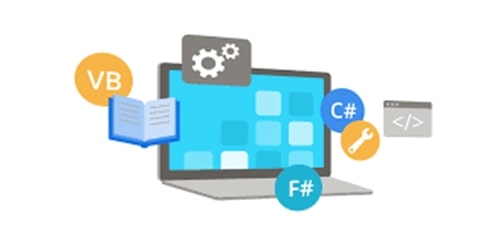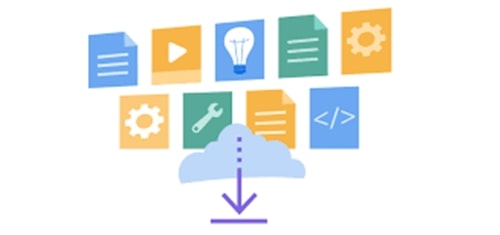Introduction about .NET Framework
The Microsoft .NET Framework is a software platform that allows developers to build, run and manage applications with improved reliability, security and scalability. It was first released in 2002, when it replaced Microsoft’s previous web application platform ASP.NET.

What is the Microsoft .NET Framework?
The .NET Framework is a software framework developed by Microsoft to run applications built on the .NET platform. The .NET Framework provides a common environment for different applications and services to run in, so that they can share the same libraries, data types, and other features.
The .NET Framework was released on February 13th 2002 with version 1.0 (not including Service Packs). It was created by Microsoft as part of their overall strategy for software development in Windows platforms including Windows XP Media Center Edition 2002 product line but has since been expanded upon with releases of new versions every few years such as 2.0 in November 2005 and 3.5 in November 2006;
These updates contained primarily incremental changes over previous versions with some new features being added here or there (such as WPF integration into OS X) while others were removed altogether due to them not being used very much or because they didn’t seem like they’d be used much at all–for example: System Restore Points which were removed with SP1 back when Vista first launched its lifetime support plan back in 2011 because most people weren’t using them anyway
Benefits of using the .NET Framework
The .NET Framework provides a number of benefits to developers and companies using it. The .NET Framework is a multi-language framework, which means that you can write your code in any language that supports the Common Language Runtime (CLR) and compile it as Intermediate Language (IL) at runtime. The CLR is also responsible for providing garbage collection capabilities, which allows programs to run without having to worry about memory management issues such as memory leaks or buffer overflows.

How to install and configure the .NET Framework
In order to get started with .NET, download the framework from Microsoft’s website. Once you have it installed on your computer, you can create applications using the framework by following these steps:
- Open Visual Studio on your computer and select File > New Project from within Visual Studio.
- In the New Project dialog box that appears, choose Console Application under Templates > C# > Windows Desktop and give it a name (like “FirstProject”).
- In Solution Explorer on the right side of Visual Studio, right-click References in FirstProject (your new project), then choose Add Reference…
The .NET Framework allows software developers to create, run and manage applications with improved reliability, scalability and security
The .NET Framework is a framework developed by Microsoft for building and running applications and applets in various programming languages. It consists of a large class library named Framework Class Library (FCL), which provides application programming interfaces (APIs) for various services such as database access, web application development, media playback, graphics, e-commerce functionality and XML Web Services interoperation.
.NET Framework also includes the runtime components—Common Language Runtime (CLR) and Base Class Library (BCL).
The FCL provides user interface functions such as windows support, registry access or database connectivity; the BCL provides fundamental data types and algorithms to manipulate them; while the CLR includes an execution engine whose job is to interpret managed code statements written in any language that supports this framework.
All of these things can be used by programmers writing their own applications on top of it – either directly through coding or indirectly through third party frameworks like jQuery.

.NET Framework Features
- Application Domains: Each application domain has its own security context and isolated memory space. This means that two applications in separate application domains cannot share data or resources with each other.
- Asynchronous Programming: You can use asynchronous programming to manage long-running tasks in your application and respond to events as soon as they occur, rather than waiting for the tasks to complete before responding.
- Binary Serialization: Binary serialization converts objects into a stream of bytes so that they can be stored or transmitted over a network connection. The object can later be deserialized into its original form by reconstituting from this byte stream.
- Compilation: Compilation converts source code written in a high-level language into lower level code that can be executed by the computer processor. Compilation takes source code written in a high level language (e.g., Visual Basic) and translates it into something that can be understood by computers
.NET Framework FAQS
What is .NET Framework?
.NET Framework is a software framework that provides a base for building applications and services using languages, compilers, libraries, objects, and other services. The .NET Framework includes a common language runtime (CLR) that provides memory management, security support, exception handling, and thread management. The .NET Framework Class Library and the .NET Compilers.
What are some of the benefits that you can get from using .NET Framework?
The .NET Framework enables developers to build applications that use object-oriented programming techniques (by eliminating the need to write many lines of code) and that run on multiple operating systems.
How is it different from Java?
Java is a programming language that uses an interpreter to convert Java source code into executable bytecode that can run on any system with a Java Virtual Machine (JVM). The JVM runs on top of an operating system such as Windows or Linux. With Java, you can write your application once and then deploy it on any platform with a JVM installed. Unlike Java, however, the CLR doesn't require you to compile your application before running it; rather, it runs your program directly from source code without requiring an intermediate step where instructions are converted into another format first.
.NET Framework Conclusion
The .NET Framework is a collection of tools and software that allows developers to create applications with ease. These applications can be used on multiple operating systems, including Windows and Android. The .NET Framework is also used in most enterprise-level applications, which means that if you have a job doing IT, then you will likely have some experience with it.








